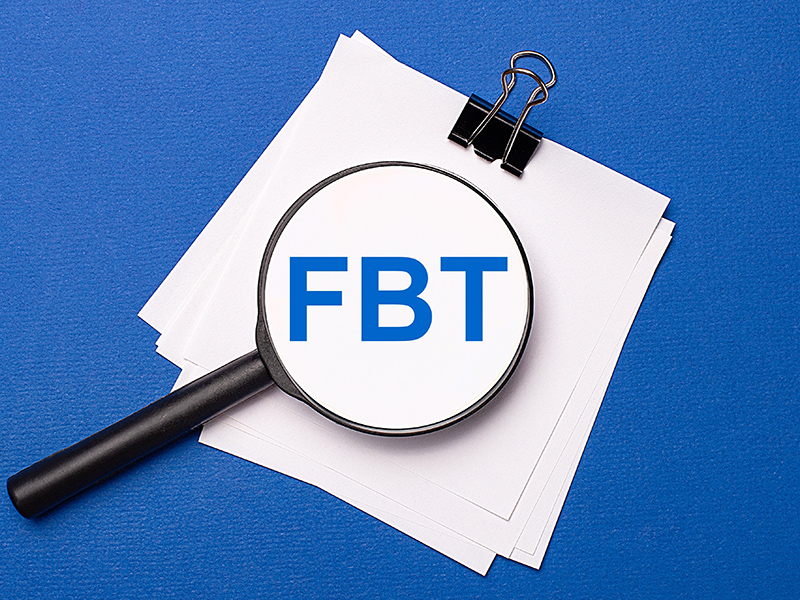JobKeeper Payments – everything you need to know
** Please note – these updates are relevant for March 2020 – September 2020 period. For details on the second round of JobKeeper Payments we have an updated blog here: https://www.afsbendigo.com.au/jobkeeper-payment-2-0-need-know/
Updated 9 June 2020
The JobKeeper Payment Scheme was legislated in April 2020 and will support businesses significantly impacted by COVID-19.
Impacted employers will be able to claim a fortnightly payment of $1,500 per eligible employee from 30 March 2020, with the final payment being made the fortnight ending 27 September 2020.
Below we have explained the eligibility, enrolment and reporting steps required to receive the payment. Please don’t hesitate to contact our team for any question you may have.
Eligible employers
Employers will be eligible if:
- Their business has an annual turnover of less than $1 billion and their turnover will be reduced by more than 30% relative to a comparable period a year ago
- Their business has an annual turnover of $1 billion or more and their turnover will be reduced by more than 50% relative to a comparable period a year ago
- Their business is not subject to the Major Bank Levy.
Eligibility includes businesses structured through companies, partnerships, trusts and sole traders and not for profit entities.
Alternative Eligibility Test
There are alternative eligibility tests for the JobKeeper Payment Scheme for businesses that don’t fit into the standard turnover test. To determine if you still qualify for the scheme, your business can satisfy one of the circumstances below:
- The business is less than 12 months old
- An acquisition or disposal has substantially changed your turnover over the past 12 months
- The business has restructured which has substantially changed turnover over the past 12 months
- The business has seen substantial growth in turnover in the last 12 months
- The business has been affected by drought or a natural disaster in the last 12 months
- The business has irregular turnover over a 12 month period
- A sole trader or partner has taken leave within the last 12 months which has significantly impacted the turnover of the business
- A special purpose employment entity will be eligible where the operating entity meets the decline test.
Each test is broken down below.
How to calculate a fall in turnover (starting 30 March 2020)
To work out your fall in turnover, you can compare either:
- GST turnover for March 2020 with GST turnover for March 2019
- projected GST turnover for April 2020 with GST turnover for April 2019
- projected GST turnover for the quarter starting April 2020 with GST turnover for the quarter starting April 2019.
How you choose to project your fall in turnover is not dependent on whether you report a quarterly or monthly BAS, though you can do that if it is easier. The turnover calculation is based on GST turnover, but there are some modifications, including disregarding GST grouping (where two or more associated business entities operate as a single GST group).
Entities that did not exist the prior year can use the average of their actual GST turnover for all the months in which the business was being carried on. Entities whose revenue was not representative the prior year because of significant impacts on trading conditions can use an alternate period such as the corresponding period in 2018.
If you work out that you qualify for the JobKeeper payments for the first fortnight because your turnover has declined by the relevant amount, you remain eligible and do not need to keep testing turnover in following months. However, you will have ongoing monthly reporting requirements as outlined below.
The Commissioner of Taxation has the discretion to set out alternative tests that can establish your eligibility when turnover periods are not appropriately comparable (for example, if your business has been in operation less than a year).
If an entity does not qualify for the month of April 2020 because its turnover has not been sufficiently affected, it can test in later months to determine if the test is met.
If the business is less than 12 months old
Applies to: new businesses which commenced operating prior to 1 March 2020 but after the comparative period last year (thus has no prior year comparatives).
Alternative test 1 – calculate the average monthly turnover for the time the business has been in operation and compare that against the projected monthly turnover.
Alternative test 2 – compare the projected GST turnover for the relevant period against the average turnover or the immediate prior three months.
You only need to satisfy one of the alternative turnover tests given.
If an acquisition or disposal has substantially changed turnover
Applies to: business that have been through an acquisition or disposal process that changed its turnover, meaning comparing periods is no longer practicable.
Alternative test – use the month directly after the acquisition or disposal as the comparison period.
If multiple acquisitions or disposals, use the month immediately after the most recent.
If there isn’t a month between the last event and the testing period, use the month immediately before the test period.
If a business restructure changed turnover significantly
Applies to: business that have undergone a restructure in the past 12 months, meaning comparing periods is no longer practicable.
Alternative test –use the month directly after the restructure occurred as the comparison period.
If multiple restructures, use the month immediately after the most recent.
If there isn’t a month between the last event and the testing period, use the month immediately before the test period.
If the business has seen substantial growth in turnover
Applies to: high growth businesses including start-ups which have seen substantial growth in the past 12 months, but have still been affected.
To use this test the business must have seen more than 50% growth in the 12 months leading up to the test period.
The alternative test also applies if the business has seen 25% growth in turnover in six months, or 12.5% growth over three months, leading up to the test period.
Alternative test – If the business reports GST quarterly, it can use the three months directly preceding the test period as its comparison period.
If the business reports monthly, it should take the GST turnover from those three months, and divide it by three, to get a monthly average.
If the business has been affected by drought or a natural disaster
Applies to: entities that conducted some or all of their business in a declared drought or natural disaster zone during the relevant comparison period, and who believe that had a negative effect on their turnover.
Alternative turnover – simply use a comparison period from 2018, instead of 2019.
Instead of comparing March 2020’s revenue, for example, to March 2019, they can compare March 2020 to March 2018.
If the business has irregular turnover
Applies to: entities where, over the 12 months leading up to the test period, the quarter with the highest GST turnover saw more than twice the revenue of the lowest-performing quarter.
Businesses cannot be considered to be cyclical.
Alternative test – calculate an average monthly GST turnover for the 12 months leading up to the test period. That monthly figure will act as the comparison turnover figure.
If a sole trader or partner has taken leave
Applies to: businesses carried on by a sole traders or partnerships with no employees, where an individual did not work for all or part of the comparison period in 2019, due to illness, injury or other leave. The alternative test applies where that leave caused a negative impact on revenue at the time.
Alternative test – business owners should take the month immediately following the individual’s return to work, and use this as the comparison period.
For special purpose employment entities
Applies to: entities where most or all of the employees may be employed by one entity of the group, the ‘employment entity’, the sole function of which is to provide the services of the employees to other members of the group.
Alternative test – A service entity will be still eligible for JobKeeper payments under an alternative decline in turnover test where the operating entity meets the decline in turnover test.
How to enrol for the JobKeeper payment (from 20 April onwards)
Each entity will need to enrol for the JobKeeper payment before 31 May following the steps below. AFS can help you with any of these items:
- Check you and your employees meet the eligibility requirements.
- Pay at least $1,500 to each eligible employee per JobKeeper fortnight (the first JobKeeper fortnight is the period from 30 March to 12 April) deducting the correct amount of PAYG withholding tax from this payment.
- Please note, for the first two fortnights that run from 30 March to 12 April, and 13 April to 26 April, the ATO will now accept the late payments of the minimum $1,500 per fortnight as long as they are paid by 8 May. This means that you can make two fortnightly payments of at least $1,500 per fortnight by 8 May, or a combined payment of at least $3,000.
- Notify your eligible employees that you are intending to claim the JobKeeper payment on their behalf and check they aren’t claiming JobKeeper payment through another employer or have nominated through another business.
- Send the JobKeeper employee nomination notice to your nominated employees to complete and return to you by the end of April if you plan to claim JobKeeper payment for April. Keep it on file and provide a copy to your registered tax agent if you are using one.
- Enrol via the ATO business portal. You must do this by 31 May to claim JobKeeper payments for April. AFS can assist you with this.
Note – As previously communicated, from 31 March 2020 access to the Business Portal is only available if you have a myGovID and Relationship Authorisation Manager (RAM). If you have not yet set up your myGovID and RAM for access to your business portal we strongly suggest you do this immediately, please see instructions here. - In the online form, provide your bank details and indicate if you are claiming an entitlement based on business participation, for example if you are a sole trader.
- Specify the estimated number of employees who will be eligible for the first JobKeeper fortnight (30 March – 12 April) and the second JobKeeper fortnight (13 April – 26 April).
The final instructions for processing and receiving your JobKeeper payments are now available as at 4 May. To view the process, see our blog JobKeeper – how to start receiving payments.
What to know if you are applying as a sole trader
- It will take about 10 minutes
- You need to have the MyGovID app open on your phone – you will be asked to input a code provided by the app.
- You don’t need to state how much your income has dropped by, it’s simply choose the relevant month and it’s a declaration that your income has decreased by the required amount.
- There are two fields where you have to state the number of employees. These are mandatory fields, even if you have ticked the box that you are a sole trader. You can put zero.
- You will need to have your bank account details ready to input.
For a high-level summary of the JobKeeper payment scheme for sole traders, reporting through Single Touch Payroll (STP) and not reporting through STP visit: www.ato.gov.au/General/JobKeeper-Payment/JobKeeper-guides
Payment process and employer obligations
The fortnightly payment will start to be issued from the ATO from 1 May 2020 and will be backdated to 30 March 2020. If employees have been stood down since 1 March 2020, they are still eligible for these payments.
Where employers participate in the scheme, their employees will receive this payment as follows:
- If an employee ordinarily receives $1,500 or more in income per fortnight before tax, they will continue to receive their regular income according to their prevailing workplace arrangements. The JobKeeper payment will assist their employer to continue operating by subsidising all or part of the income of their employee(s).
- If an employee ordinarily receives less than $1,500 in income per fortnight before tax, their employer must pay their employee, at a minimum, $1,500 per fortnight, before tax.
- If an employee has been stood down, their employer must pay their employee, at a minimum,
$1,500 per fortnight, before tax. - If an employee was employed on 1 March 2020, subsequently ceased employment with their employer, and then has been re-engaged by the same eligible employer, the employee will receive, at a minimum, $1,500 per fortnight, before tax.
Superannuation is payable on any ordinary wage the employee would have otherwise earnt. It will be up to the employer if they want to pay superannuation on any additional wage paid because of the JobKeeper Payment.
Eligible employees
Employees will be eligible if:
- They are currently employed by an eligible employer (see conditions above)
- They have been stood-down or re-hired by an eligible employer
- They were employed at 1 March 2020
- They are full time, part time or a long-term casual (more than 12 months)
- They are a minimum 16 years of age (16 and 17 year olds need to be independent or not in full time study on 1 March 2020)
- They are not receiving the JobKeeper Payment from another employer
- They are an Australian citizen, permanent visa holder, Protected Special Category Visa Holder, a non-protected Special Category Visa Holder who has been residing continually in Australia for 10 years or more, or a Special Category (Subclass 444) Visa Holder.
If you decide to participate in the JobKeeper payment scheme, you must nominate all your eligible employees. You cannot pick and choose between eligible employees.
Reporting of eligible employees
Each entity can, or AFS can on your behalf, apply for the JobKeeper payment for your eligible employees following the steps below:
- Apply to claim the JobKeeper payment by logging in to the ATO Business Portal
- Ensure you have paid each eligible employee a minimum of $1,500 per JobKeeper fortnight before tax.
- Identify your eligible employees in the application form by:
- selecting employee details that are prefilled from your STP pay reports if you report payroll information through an STP enabled payroll solution, or
- manually entering employee details in ATO online services or the Business Portal if you do not use an STP enabled payroll solution, or
- contact your AFS accountant who will submit a report on your behalf through online services for agents
- Submit the confirmation of your eligible employees online and wait for your confirmation email or SMS showing it has been received.
- Notify your eligible employees you have nominated them
- The ATO will pay you the JobKeeper payment for all eligible employees after receiving your application.
- Each month, you will need to reconfirm that your reported eligible employees have not changed through ATO online services, the Business Portal or via AFS as your registered tax agent. This will ensure you will continue to receive the JobKeeper payments from the ATO. You do not need to retest your reported fall in turnover, but you will need to provide some information as to your current and projected turnover. This will be done in your monthly JobKeeper Declaration report.
- If your eligible employees change or leave your employment, you will need to notify the ATO through your monthly JobKeeper Declaration report.
Businesses without employees
Businesses without employees, such as the self-employed, can follow the same steps as above and register their interest in applying for JobKeeper Payment here.
Eligibility for not-for-profits and charities
Charities that are registered with the Australian Charities and Not-for-profits Commissions (ACNC) will be eligible for the JobKeeper Payment if they have suffered a 15% or more decrease in turnover as a result of COVID-19. This is to recognise the important role of charities and the significant increase in demand for their services.
However, this reduced threshold does not apply to ACNC registered charities that are public or private universities or schools including primary schools, secondary schools and schools for children with disabilities. These charities must apply the basic turnover test depending on their aggregate turnover (either 30% or 50%).
In addition, donations that ACNC registered charities and gift deductible recipients receive or are likely to receive are also included in the calculation to work out the current GST turnover and projected GST turnover of these entities.
Eligible businesses and charities can apply for the payment online and are able to register their interest via www.ato.gov.au/Job-keeper-payment
Further details
Treasury has provided a great overview of the program including a number of scenario examples and frequently asked questions (updated 28 April):
FACT SHEET – supporting businesses to retain jobs
FACT SHEET – information for employers
FACT SHEET – information for employees
FACT SHEET – information for sole traders
FACT SHEET – frequently asked questions
Our team are here to help guide you through this process. For any questions on your business or implementing staffing changes please contact us. Call 03 5443 0344 or email afs@afsbendigo.com.au



